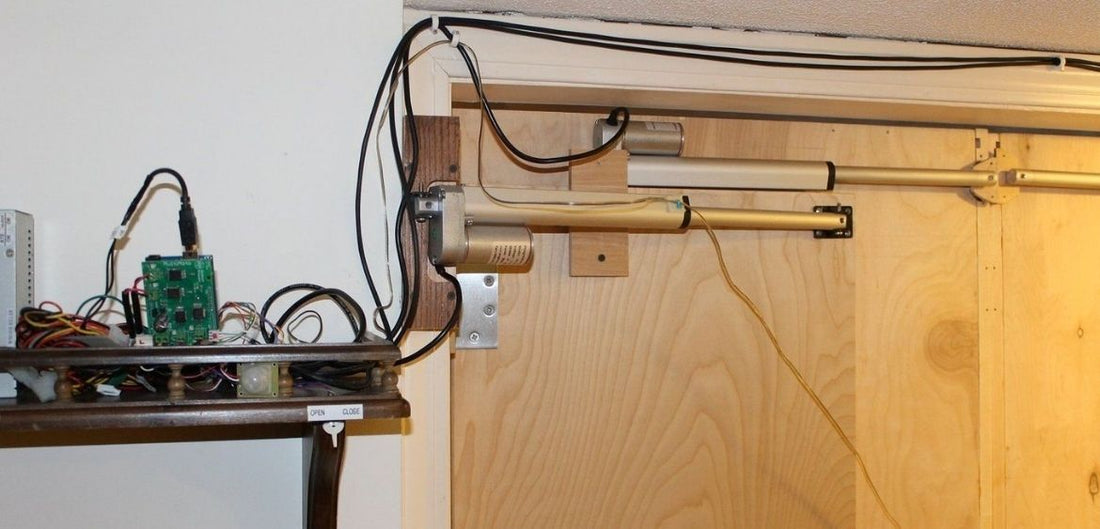At Progressive Automations, we quite often receive news of exciting new projects where clients have used our linear actuators in fun and interesting ways. Below is a guide on how Bruce McArdle, a Progressive Automations customer, designed and built his own automatic secret door, disguised as a bookcase!
Project Overview & Reasoning
There are three main components to this project, namely, an Arduino microcontroller, a motor controller, and linear actuators, which were used to enable the automatic opening and closing of a pair of doors (i.e., bookshelf secret doors). The bookcases were handmade to support fully loaded shelves and have a unique hidden door mechanism (a hinge and slide), so the bookcases look like they are resting against the outside wall. To open, the bookcases slide apart slightly, and pivot inward into the ‘secret lair’, then sliding outward to not block too much space inside.
For more information on that part of the project, and to see the hinges for the secret bookcase door, visit the Instructables post.
Bruce McArdle’s reason for automating the hidden bookshelf doors was two-fold:
- The door was left open most of the time, exposing the hidden room behind the bookcases.
- An open bookcase secret door defeats the whole purpose.
How to Make a Secret Bookcase Door
Our PA-14 linear actuator was the core component for this project. Phase 1 of the project included the building of the secret door. Phase 2 included adding the linear actuators to open and close the doors automatically.
The design requirements were as follows:
- Create a reliable fully automatic "open and close" mechanism for both door hinges/sliders.
- The external open switch should be hidden.
- Include internal manual switches to open/close the doors.
- Automatically close the doors if no motion is detected in the room for 2 hours.
- Lower the electric power use when in standby mode.
- Emergency ingress/egress in case of power/Arduino failure.
- Pinch free if a person or object is between the closing doors.
Mounting the Linear Actuators
A key component was the Progressive Automations PA-14 linear actuator. These have sufficient force and speed in a compact size. Four 8” linear actuators were used to move both doors. One moves the bookcase door along with the slides, and one pivot around the hinges. The second door was a mirror image of the first and required two linear actuators.

To create a pinch-free door and to be able to open the door in case of a power failure, the shaft ends of the linear actuators (responsible for opening the doors) were attached to strong magnets as opposed to being mounted in a fixed location. When a finger/arm gets caught in the door or when a power failure occurs, the door can be pried open, which will dislodge the magnetic linear actuator connection.
Power and Control
An Arduino Uno was responsible for all inputs and outputs. Additionally, it controlled triggers on the motor driver. A RobotPower Multimoto high power quad motor shield provided the power control to the four linear actuator motors.
The switches/sensors were attached to the inputs on the Arduino and included:
- Two manual switches (attached to the inside of the door).
- One outside switch (attached to a DVD cover to keep it hidden).
- One PIR sensor (used as an interrupt when motion was detected).
All components and power supplies were located on a shelf next to the door on the inside.

Final Word
There you have it! An automated secret bookcase door using linear actuators. We thank Bruce for providing us with the information – hopefully it may be useful for your next project!
For more information on this project and for the Arduino code, visit the Instructables article, or reach out to one of our engineers!




